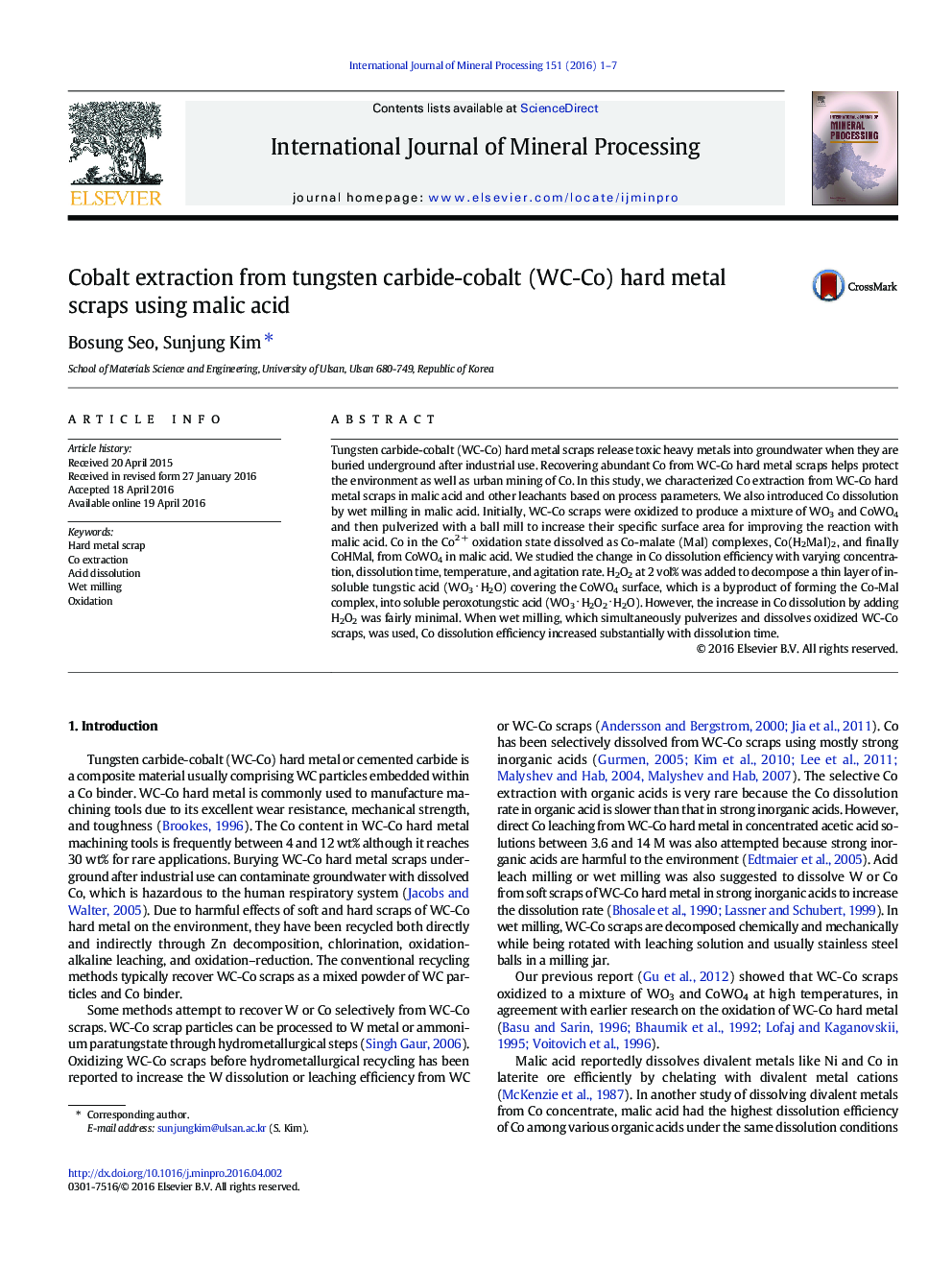| Article ID | Journal | Published Year | Pages | File Type |
|---|---|---|---|---|
| 213679 | International Journal of Mineral Processing | 2016 | 7 Pages |
•Efficient Co extraction from discarded WC-Co hard metal scraps in malic acid•Chelation of malate with Co dissolved from the mixture of WO3 and CoWO4•Investigation of Co dissolution parameters in malic acid and other leachants•Improved Co dissolution efficiency from WC-Co hard metal scraps by wet milling
Tungsten carbide-cobalt (WC-Co) hard metal scraps release toxic heavy metals into groundwater when they are buried underground after industrial use. Recovering abundant Co from WC-Co hard metal scraps helps protect the environment as well as urban mining of Co. In this study, we characterized Co extraction from WC-Co hard metal scraps in malic acid and other leachants based on process parameters. We also introduced Co dissolution by wet milling in malic acid. Initially, WC-Co scraps were oxidized to produce a mixture of WO3 and CoWO4 and then pulverized with a ball mill to increase their specific surface area for improving the reaction with malic acid. Co in the Co2 + oxidation state dissolved as Co-malate (Mal) complexes, Co(H2Mal)2, and finally CoHMal, from CoWO4 in malic acid. We studied the change in Co dissolution efficiency with varying concentration, dissolution time, temperature, and agitation rate. H2O2 at 2 vol% was added to decompose a thin layer of insoluble tungstic acid (WO3 ⋅ H2O) covering the CoWO4 surface, which is a byproduct of forming the Co-Mal complex, into soluble peroxotungstic acid (WO3 ⋅ H2O2 ⋅ H2O). However, the increase in Co dissolution by adding H2O2 was fairly minimal. When wet milling, which simultaneously pulverizes and dissolves oxidized WC-Co scraps, was used, Co dissolution efficiency increased substantially with dissolution time.
